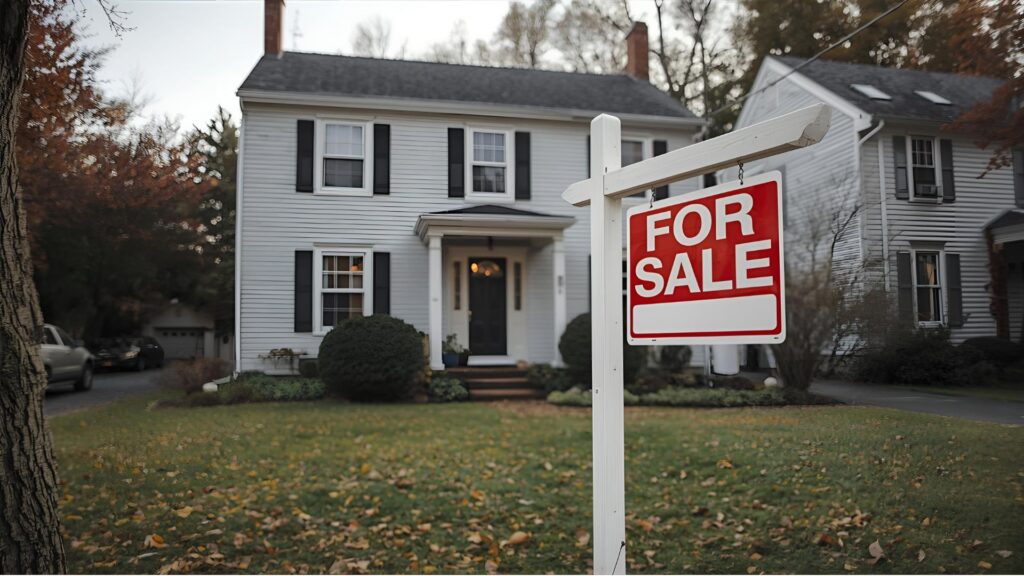In recent days, President Donald Trump announced a new proposal aimed at addressing the housing affordability crisis in the United States: the introduction of 50-year mortgages.
The idea behind it is simple: to reduce monthly mortgage payments, making it easier for more Americans to qualify for a loan and purchase a home.
But while that sounds promising, financial and real estate experts warn that a longer loan term might lower your monthly payment today, yet significantly increase the total amount you pay over time.
In this article, we’ll break down how a 50-year mortgage would work, its pros and cons, and what impact it could have on the housing market.
By the end, you’ll have a clear understanding of whether this type of loan could be a smart opportunity or a costly financial mistake.
What Is a 50-Year Mortgage and Why Is It Being Considered?
A 50-year mortgage is exactly what it sounds like — a home loan with a 50-year term instead of the traditional 30 years.
The proposal is part of a broader effort to make homeownership more accessible, especially for younger buyers and middle-income families who are struggling with record-high home prices and mortgage rates above 6%.
Extending the loan term means lower monthly payments, but it also means you’ll be paying interest for a much longer time. And because in the early years of a mortgage most of your payment goes toward interest, not principal, your equity will grow extremely slowly.
According to an analysis by Realtor.com, a 50-year mortgage on a $400,000 home with a 10% down payment and a 6.25% rate would lower the monthly payment by about $250.
However, the total interest paid over the life of the loan would jump to roughly $816,000, compared to $438,000 on a 30-year mortgage.
The difference: $378,000 more in interest.

Potential Benefits of a 50-Year Mortgage
While the plan has sparked controversy, there are a few potential advantages worth noting:
1. Lower Monthly Payments
By spreading the loan balance over a longer period, the monthly payment decreases. This could make homeownership more attainable for some families who are currently priced out of the market.
2. Easier Qualification
Lower monthly obligations could help more people meet lender requirements, giving access to buyers who wouldn’t otherwise qualify for a mortgage.
3. Refinancing Flexibility
Some buyers might use a 50-year mortgage as a temporary strategy — buying now, then refinancing later into a shorter-term loan when rates drop or income rises.
These benefits can seem attractive, especially for first-time buyers eager to enter the market. But as with any financial product, the advantages come with serious trade-offs.
The Risks You Can’t Ignore
1. A Much Higher Total Cost
While your monthly payment may drop slightly, the total amount paid in interest skyrockets.
Let’s look at the same $400,000 example at 6.25% interest:
- 30-year mortgage: $438,000 in interest
- 50-year mortgage: $816,000 in interest
That’s $378,000 more — nearly enough to buy a second home.
So, while you might save a few hundred dollars per month, you’d be paying for decades longer and spending almost double overall.
2. Slower Equity Growth
Equity represents how much of your home you actually own and with a 50-year mortgage, it builds very slowly.
After 10 years, a homeowner would have paid off only around 14% of the loan’s principal, compared to 24% with a 30-year loan.
That slower progress means it would take much longer to sell or refinance without owing more than the home is worth, limiting financial flexibility for years.
3. Potentially Higher Interest Rates
Longer loan terms carry more risk for lenders, and higher risk usually means higher interest rates.
If 50-year mortgages come with slightly higher rates than 30-year ones (which experts expect), the supposed savings on monthly payments could shrink even further or even disappear altogether.
4. Possible Impact on Home Prices
Economists warn that if buyers suddenly have access to lower monthly payments, but the number of available homes doesn’t increase, home prices could rise even higher.
In other words, greater affordability on paper could simply fuel more competition, pushing prices up and canceling out the intended benefit.
When Could a 50-Year Mortgage Make Sense?
In a few specific scenarios, this type of loan might make sense but only with a clear long-term strategy.
- For young buyers, it could be a way to enter the market sooner and lock in a property before prices climb higher, with plans to refinance later.
- For investors, it could work if the lower monthly payment produces a positive cash flow when renting out the property.
However, these cases are the exception, not the rule. For most buyers, the extra interest and slower equity growth far outweigh the short-term relief of a smaller monthly payment.
Would It Really Solve the Affordability Problem?
Despite its goal, most housing experts agree that a 50-year mortgage would not solve the root issue which is the lack of housing supply.
Without building more affordable homes, extending mortgage terms only increases demand. That extra demand could raise prices even more, making homes less affordable in the long run.
Joel Berner, senior economist at Realtor.com, summed it up well: “The savings from a 50-year mortgage could be completely wiped out by rising home prices.”
Where the Proposal Stands Now
Although the idea has been discussed publicly by President Trump and confirmed by Federal Housing Finance Agency (FHFA) Director Bill Pulte as “under consideration,” 50-year mortgages are not yet available in the U.S.
To make them official, the government would need to change existing mortgage laws, which currently cap standard loan terms at 30 years.
So for now, the proposal is still in the discussion phase and could take time if it ever becomes reality.
Conclusion
A 50-year mortgage may seem like a solution to high monthly payments, but in most cases, it’s a short-term fix with long-term consequences.
While it could help some buyers qualify for a home today, the total cost, slower equity growth, and potential for rising prices make it a risky path for many.
If your goal is financial stability and long-term wealth, a traditional mortgage with a future refinancing plan is likely the smarter move.
Working with an experienced real estate agent can make all the difference when evaluating your financing options. An agent can help you understand current market conditions, compare mortgage scenarios, and decide when and how to refinance for the best long-term results.
If you’re ready to explore your options or take advantage of opportunities in today’s housing market, now is the time to act.
You won’t just be investing in a property — you’ll be investing in your financial future.
If you’re located in Massachusetts, we’d love to offer you a free consultation with a local real estate expert. Get clear answers, explore your possibilities, and take the next step toward homeownership with confidence. Click here to schedule your consultation.













![eBook How to Increase Home Value [7 Simple Ways]](https://realestatejuanc.com/wp-content/uploads/2022/03/FORMAS-WAYS-TO-INCREASE-YOUR-HOME-VALUE.png)